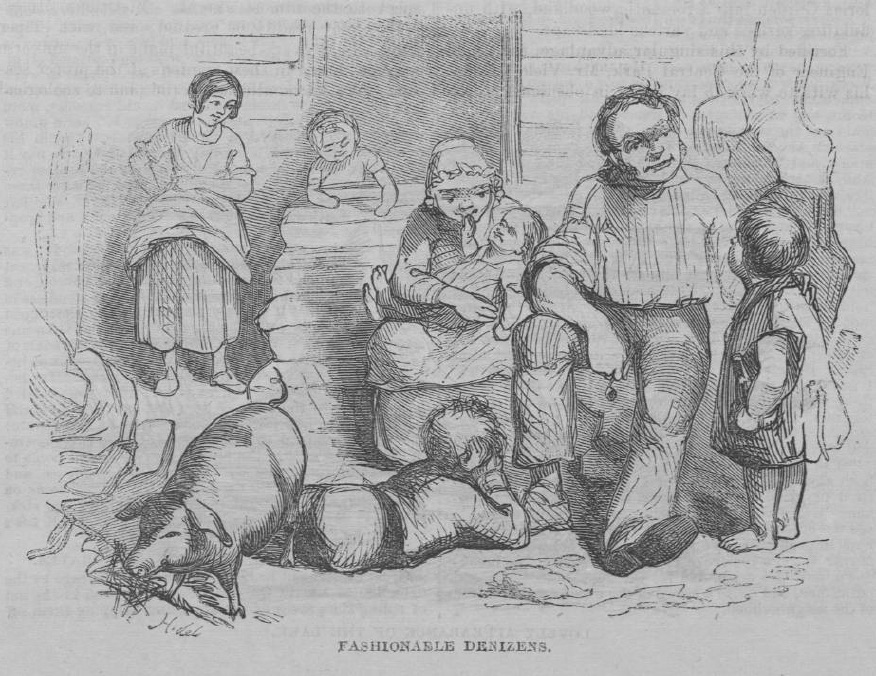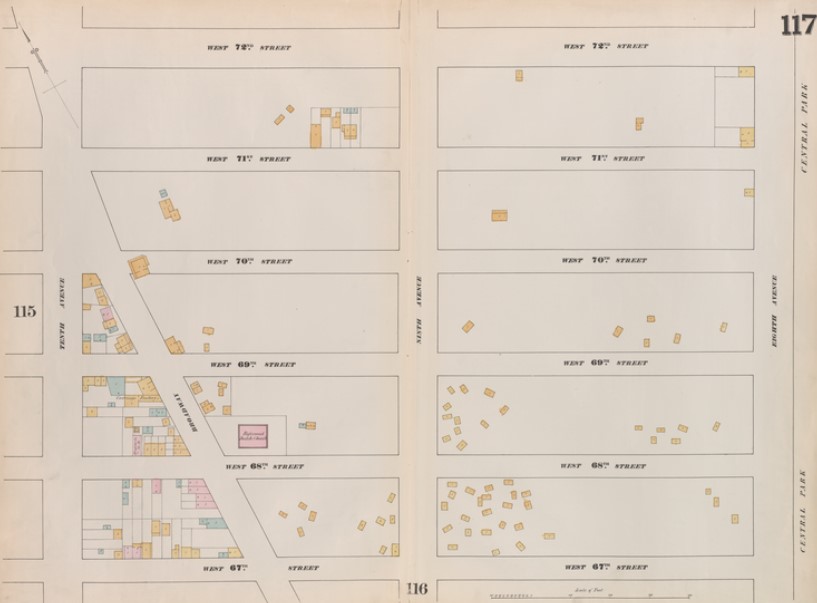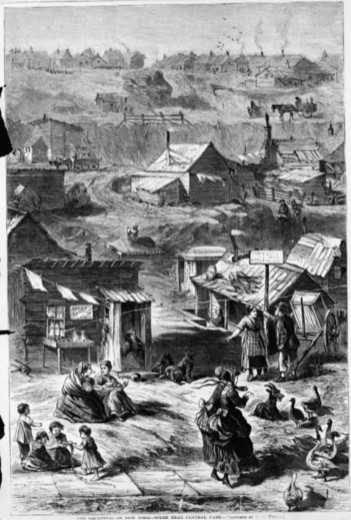Before the Park
Long before Central Park was created, the movement of humans and animals shaped Manhattan’s landscapes. The park’s creation displaced some human-animal relationships to the edges of the island.

Settled by Eastern Woodland people long before the Dutch and the English built New Amsterdam and New York, this island was known as Mannahatta, part of Lenapehoking. Generations of Lenape people established trails through parts of what is now Central Park. They hunted deer and turkey, and gathered oysters and fish from Mannahatta’s rivers, estuaries, and wetlands. Beginning in the 1620s, the Dutch West India Company pursued beaver pelts here for European markets. Colonization brought drastic changes to the island ecosystem and Lenape livelihoods.
Dutch settlers killed many Lenape people through warfare and disease; English settlers further seized the Lenape people’s homelands. Surviving Lenape fled as far as Oklahoma, Wisconsin, and Ontario and are often known as the Delaware Nation. Some remained on the East Coast. Settlers hunted wildlife that once sustained the Lenape, and brought their own animals – livestock such as cattle and hogs – that further transformed the environment. Well before Central Park’s origins, agricultural, residential, industrial, and military land use had already erased over a thousand of years of Lenape presence and the ecosystem they managed and lived in.
As in all cities, animals were a vital part of life in the city the Dutch built from Manhattan’s southern tip. New Yorkers of all social classes kept livestock for sustenance and livelihoods. However, the character of their farms and human-animal relationships varied. Working-class immigrants released hogs into the streets for future capture and slaughter. Dairy businesses raised cattle, and elite families kept stables of horses. By the early 1800s, hogs and cattle raised for food in the crowded downtown endangered public health. Authorities sought to regulate them or expel them from the area.
Immigrant and Black New Yorkers, and livestock in the media
By the 1850s, German and Irish immigrant communities grew vegetables and raised goats, hogs, and cows across the middle of Manhattan. Black landowners and some Irish New Yorkers also used livestock as part of their livelihoods in Seneca Village, centered around what are now Eighth Avenue and the mid-80s on the near west side. New York elites, reformers, and leaders planned a sprawling park for the middle of Manhattan. Media and some neighbors tarred the German and Irish agriculturists with the same brush as the hogs and cows downtown. Much of the media coverage of the park ignored the thriving Black community, justifying the taking of their land for the park.


Historian Alexander Manevitz argues that stories about aggressive goats and filthy pigs distracted from the injustice and memory of Seneca Village’s displacement. The New York Times described an Irish majority living in “rickety” shanties that housed “four or five persons, not including the pig and the goats; and indeed it would be a difficult task to distinguish the genus to which they severally belonged, so identified are they in the filth which is the garb alike of all.” When the city expelled residents in 1858, many Black Seneca Villagers moved to other Black neighborhoods. Many of the Irish and German agriculturists moved with their animals just a few blocks away. There, escalating property values soon brought more real estate speculation.
Interested in learning more? Check out these resources:
Animating Central Park, chapter 1
Joe Baker, Lenapehoking. (exhibit), Brooklyn Public Library, 2022.
Eric Sanderson, Mannahatta: A Natural History of New York City. New York: Abrams, 2009.
Sara Cedar Miller, Before Central Park. New York: Columbia University Press, 2022.
Catherine McNeur, Taming Manhattan: Environmental Battles in the Antebellum City. Cambridge: Harvard University Press, 2014.
Andrew Robichaud, Animal City: The Domestication of America. Cambridge, MA: Harvard University Press, 2020.
Roy Rosenzweig and Elizabeth Blackmar, The Park and the People. Ithaca: Cornell University Press, 1992.